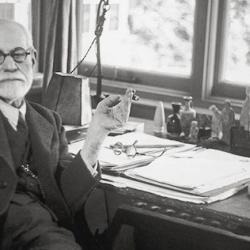Notes on Comedy of Errors from Marjorie Garber and A.D. Nuttall.
1) Garber points out that the play begins with a legal threat, a death sentence hanging over Egeon of Syracuse because of his visit to Ephesus. This is the crux of the problem in many of the comedies, and like other comedies, Comedy ends with the relief of the penalty of death, an act of mercy on the part of the Duke. There’s an evangelical thrust to this, I think, especially in Merchant of Venice: The law threatens, and mercy delivers from law.
2) Egeon’s lengthy story is, Garber suggests, a romance, but a number of the features of the story suggest something closer to allegory. A shipwreck is a perfect symbol of a divided state (or a divided church), and the ship in Egeon’s story literally splits in two, splitting the family along with it. The fact that Egeon’s wife had given birth to her sons in an “inn” hints at incarnation, a hint filled out in the concluding scene when the Abbess, now reunited with her husband Egeon, describes the reunion of her sons as a new birth, a “nativity.” The play also ends with a reference to a “gossips’ feast,” a christening feast. And the “travail” of the Abbess/mother – the travail/travel – has gone on for 33 years.
While we’re on these lines, the fact that the Abbess has been married, and is restored to her husband, has clear Protestant-Catholic overtones. Since the play is a comedy, it ends with a massive reunion – of brothers, of husband and wife, of family – and the split ship, the ship split by the opening storm, is repaired. An ecumenical wish?
If so, it’s a Protestant ecumenical wish. The Abbess leaves her Abbey, and the whole play emphasizes, against Roman Catholic exaltation of virginity, that marriage is the highest good.
3) This is a comedy of errors in both senses of the word: There are mistaken identities and errors of that sort, but the play is also a play of errare, wandering.
4) Both Garber and Nuttall point out that Shakespeare almost certainly gained his knowledge of the Plautine play on which this is based from a Latin edition, since the English translation was not published until some years after Shakespeare’s play. Despite this, Nuttall notes, Shakespeare doesn’t drop in Latin phrases, as some of his contemporaries do. He has more Latin and Jonson suggested, but he’s no showoff.
5) Both point out too that Shakespeare changes the location of the action, from Epidamnum to Ephesus, and both suggest that this allows Shakespeare to add a Christian gloss to the classical play. Ephesus was the site of the great temple of Artemis, and was known as a place of witches and cheats. For an Elizabethan audience, Ephesus also conjured up Paul’s letter, and a play about a separated family might remind them of the passage on marriage in Ephesians 5.
6) Separation and reunion provides a structural pattern at a number of levels – not only with the family of Egeon but also psychologically. Nuttall points out that in the reunion scene at the end of the play Antipholus finds himself by looking in the glass at the face of the other Antipholus. Oneself in another, as Paul Ricoeur almost puts it. Both Garber and Nuttall describe the movement of the play as “losing oneself to find oneself.”
7) Nuttall notes the shifts on the imagery of the sea. The sea divides Egeon from his son and wife, and divides one Antipholus from the other; it is an image of “self-loss.” Antipholus of Syracuse expresses this with the image of the drop in the ocean: He is a drop of water in the world, seeking another drop.
The ocean’s indifferentiation swallows him and his brother (1.2.32-40), but Adriana uses the image of the drop of water as an image of marriage (1.2.119-29). Thus, Nuttall says, “the sea is initially an agent of separation, then an emblem of bewilderment and lost identity, and last, most strangely, a source of healing.”
8) The play is a story of loss and recovery. It is the story of a son lost and found. And it’s the story of a pursuing, searching father. It’s a prodigal son story.
9) Shakespeare observes unities of time and place with uncharacteristic rigor here. The play takes place over the course of one day, while the clock ticks away threatening Egeon with each passing second. It takes place on one street, with three houses – the Phoenix, the Porcupine, and the Abbey.












